Fish
If you keep a goldfish in a dark room it will become pale.
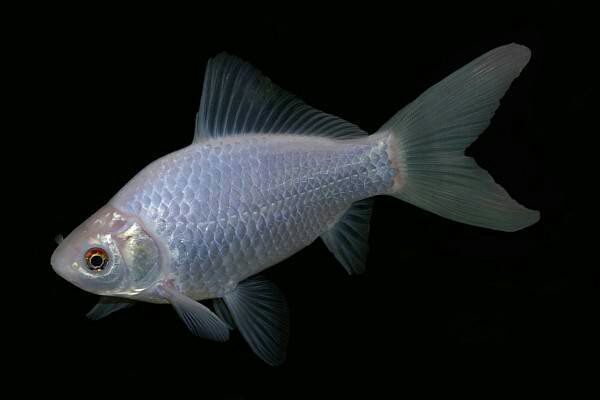
Anglerfish can swallow prey up to twice their own size. Male anglerfish are much smaller than the female. While the female can reach up to 61 cm [24 in] long, the males barely reach 4 cm [1.6 in] long and live as parasites on their mates. They stay together for life.

Tuna fish can swim 64 km [40 miles] in one day.
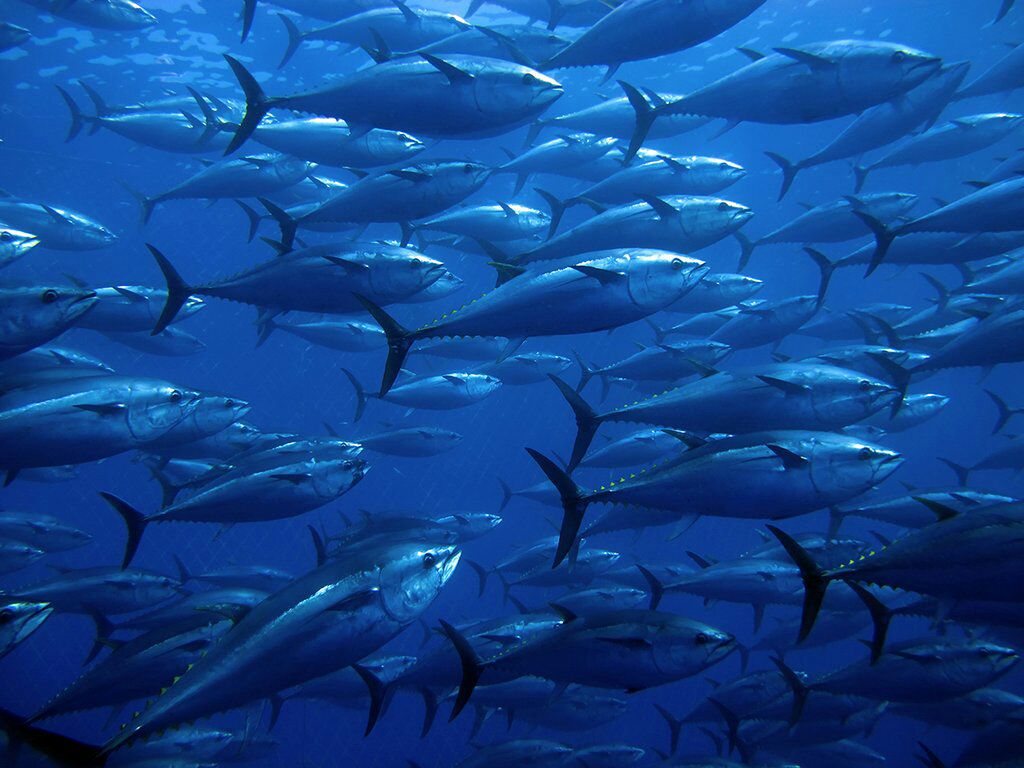
There is a fish that can glide, called the flying fish. It sometimes reaches heights up to 6 m [19 ft] and gliding long distances, up to 200 m [655 ft]. On average, flying fish glide 50 m [160 ft].
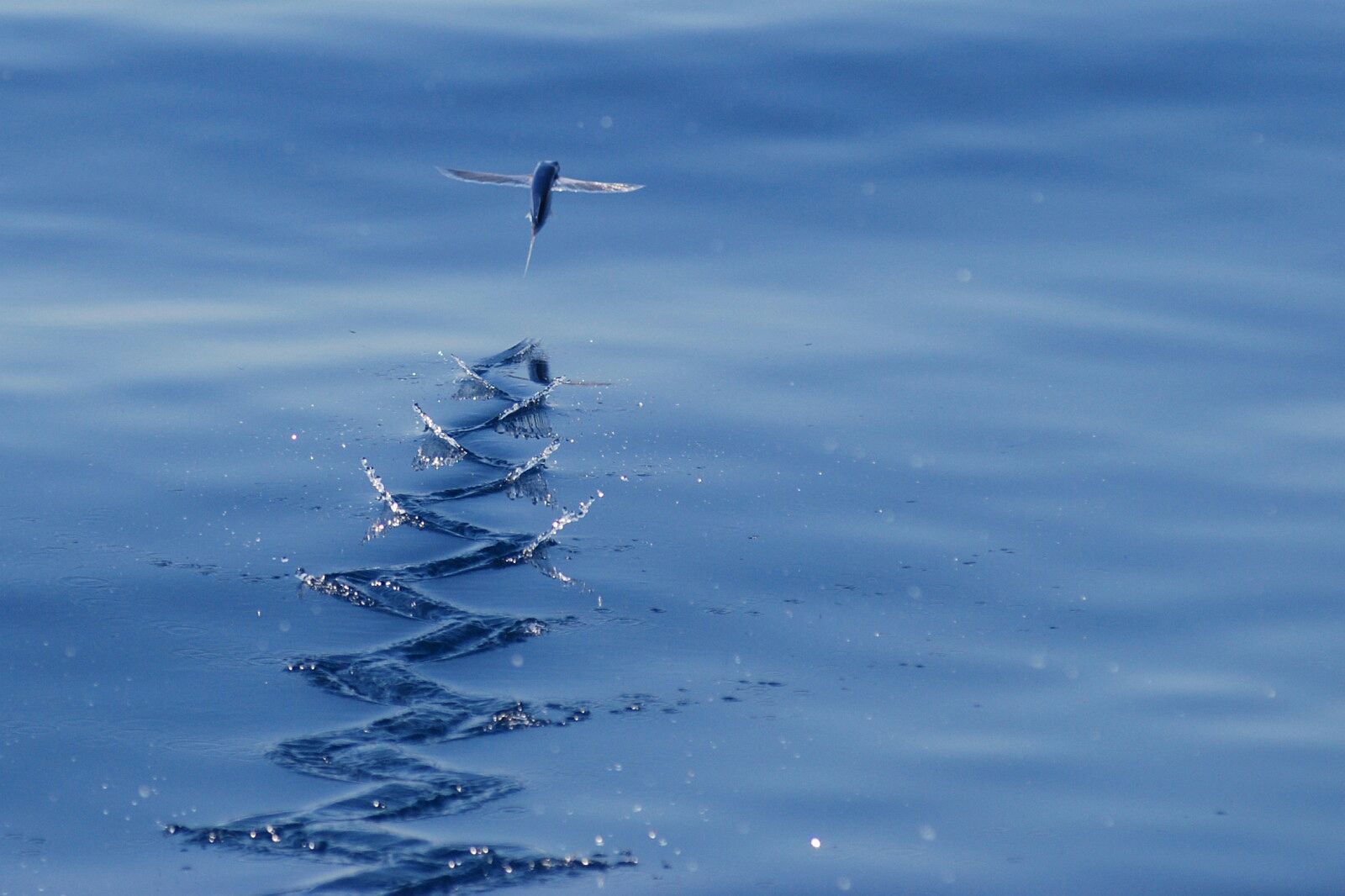
The brightly colored parrotfish is known to change its shape, color, and even gender during its life. If the dominant male parrotfish dies, a female will change gender and become the dominant male.
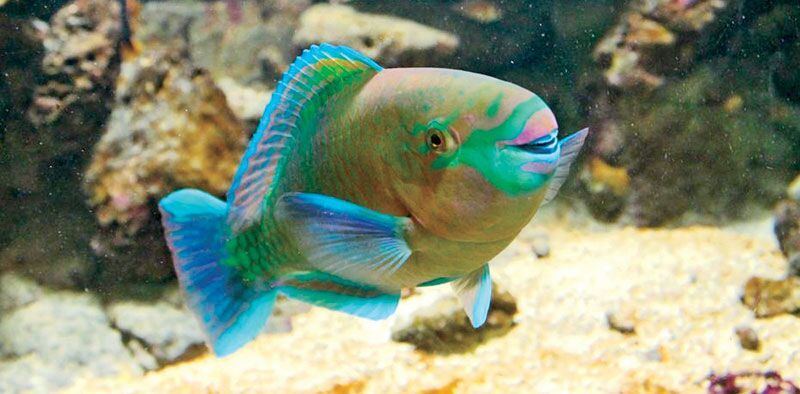
The California corbina has no air bladder and is unable to make croaking sounds, unlike its relative fish. Corbina are sometimes referred to as "Beans," and for the surf fisherman are one of the most prized catches (Surf fishing is the sport of catching fish standing on the shoreline or wading in the surf). Below a bird of prey is carrying a fish that might be a Corbina.
CorbinabiggestFan ;)

Most fish reproduce by laying eggs, though some fish, such as great white sharks, give birth to live babies called pups.
The oldest known age for a fish was an Australian lungfish. In 2003, it was still alive and well at 65 years old. Lungfish can live out of water for several years. It secretes a mucus cocoon and burrows itself under the unbaked earth. It takes in air with its lung through a built-in breathing tube that leads to the surface. A lungfish has both gills and a lung.
Some fish, such as the great white shark, can raise their body temperature. This helps them hunt for prey in cold water.
Fish use a variety of low-pitched sounds to convey messages to each other. They moan, grunt, croak, boom, hiss, whistle, creak, shriek, and wail. They rattle their bones and gnash their teeth. However, fish do not have vocal chords. They use other parts of their bodies to make noises, such as vibrating muscles against their swim bladder.
[There should be a GIF or video here. Update the app now to see it.]
Fish can form schools containing millions of fish. They use their eyes and something called a lateral line to hold their places in the school. The lateral line is a row of pores running along the fish's sides from head to tail. Special hairs in the pores sense changes in water pressure from the movements of other fish or predators. The fish in the middle of a school control the school. The fish on the outside are guided by those in the middle.
Since a fish's jaw is not attached to its skull, many fishes can shoot their mouths forward like a spring to catch startled prey.
Electric eels and electric rays have enough electricity to kill a horse.
Sharks are the only fish that have eyelids.
Fish have sleep-like periods where they have lowered response to stimuli, slowed physical activity, and reduced metabolism but they do not share the same changes in brain waves as humans do when they sleep.
Some fish, such as the herbivorous fish (grazers), often lack jaw teeth but have tooth-like grinding mills in their throats called pharyngeal teeth. Shown below.

Saltwater fish need to drink more water than freshwater fish. Since seawater is saltier than the liquids in a fish's body, water inside the fish is constantly flowing out. If they didn't drink to replace the lost water, saltwater fish would dry up like prunes.
Some brands of lipstick contain something found in fish scales called "pearl essence," also known as "pearlescence." It is primarily sourced from herring and can be found in lipsticks, nail polishes and other cosmetic products due to the shimmer effect it creates, although many cosmetics now contain a synthetic version of pearl essence.
Most fish can see in color and use colors to camouflage themselves or defend themselves and their territory. Most fish have the best possible eyesight for their habitat and can most certainly see you peering at them in a fish tank. Some fish can see polarized and ultraviolet light.
A fish does not add new scales as it grows, but the scales it has increase in size. In this way, growth rings are formed and the rings reveal the age of a fish.
A ship has a heavy keel in the lower part to keep it from capsizing. Fish, on the other hand, have the keel on top. If the paired fins stop functioning to keep the fish balanced, the fish turns over because its heaviest part tends to sink, which happens when it dies.
An inflated porcupine fish can reach a diameter of up to 90 cm [35 in]. It puffs up by swallowing water and then storing it in its stomach. The stomach increases in size with more water. If the fish is taken out of water, it can inflate in a similar way by swallowing air.
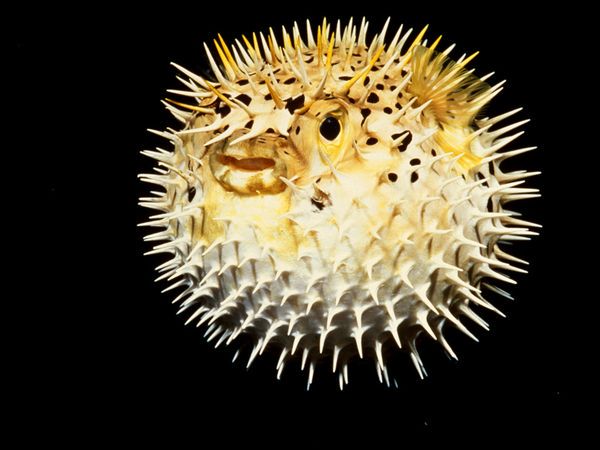
A fish can drown in water. Like humans, fish need oxygen, so if there isn't enough oxygen in the water, they will suffocate.
Although the fangtooth fish is only 16 cm [6 in] at the most in length, it has teeth about the size of a human's. They can't close their mouths completely because of that.
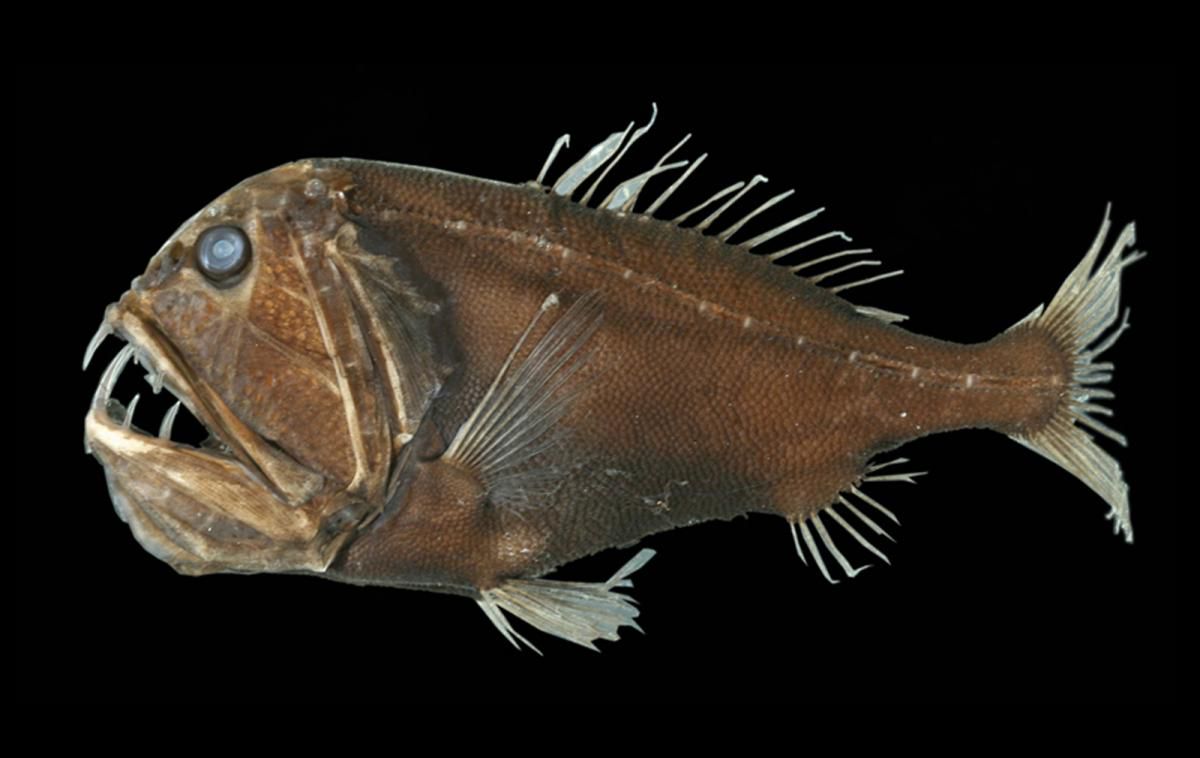
Most fish cannot swim backwards. Those that can are mainly members of one of the eel families.
Fish would suffocate if they tried to chew because chewing would interfere with water passing over their gills.
The biggest fish in the world is the giant whale shark, which can grow to the length of two school buses. It weighs over 23 tonnes [25 tons] and eats mainly plankton. They have five large pairs of gills. Whale sharks have a mouth that can be 1.5 m [4.9 ft] wide, containing 300 to 350 rows of tiny teeth and 10 filter pads which it uses to filter feed. Unlike many other sharks, whale sharks' mouths are located at the front of the head rather than on the underside of the head. It has over 4,000 teeth, though they are only 3 mm [1/8 of an inch] long. Teeth shown below.
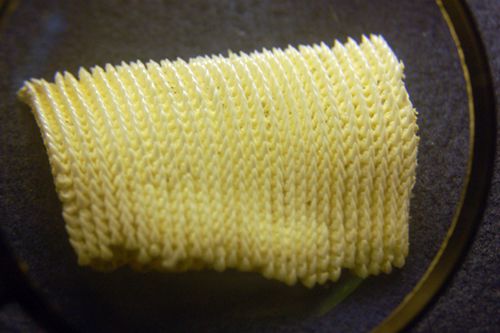
The most poisonous fish in the world is the stone fish. Its sting can cause shock, paralysis, and even death if not treated within a few hours.
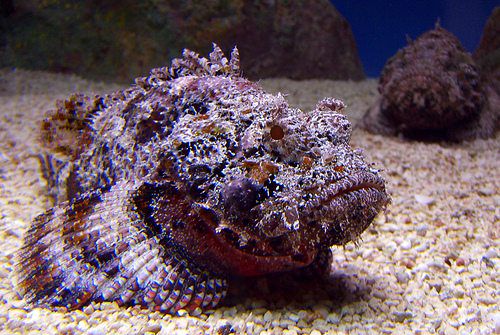
The fastest fish is the sailfish. It can swim as fast as 110 kmh [70 mph].

Some fish do not have scales. Sharks, for example, have rough sandpapery skin instead of scales.
In Japan, the fugu, or puffer fish, is a succulent but lethal delicacy. It contains tetrodotoxin, a deadly poison. However, it is so delicious that Japanese gourmets risk their lives to prepare it. To make this high-risk dish, chefs must have a certificate from a special school that teaches preparation of this toxic fish.
Hammerhead sharks can live in schools of more than 500 sharks. The strongest female swims in the middle. When she is ready to mate, she shakes her head from side to side to signal the other female sharks to move away so she is the center of attention.
Some desert pupfish can live in hot springs that reach temperatures greater than 45° C [113° F].
The mudskipper is a fish that spends most of its time out of water and can "walk" on its fins. It carries a portable water supply in its gill chambers when it leaves the water. It can also breathe through the pores of its wet skin. Mudskippers are able to jump 61 cm [2 ft] in the air. Watch the video below for more information on mudskippers.
[There should be a GIF or video here. Update the app now to see it.]
There are approximately 32,000 different kinds of fish in the world today, which is more than all the other kinds of vertebrates combined. Scientists are discovering new species all the time, though they've explored only 1% of the ocean depths. They believe millions of new kinds of animals and fish are down there, waiting to be discovered.
The batfish plays dead when danger is near. It floats motionless on its side when scared, making it look like a dead leaf floating on the surface of the water.
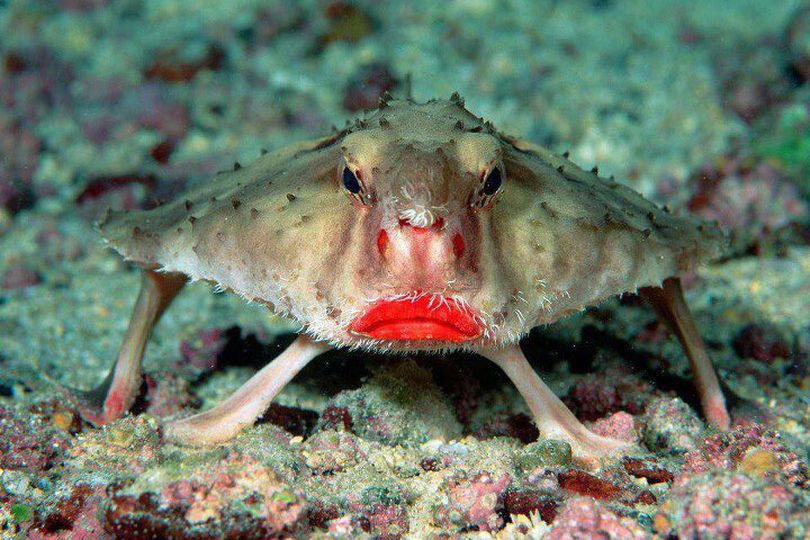
Anableps, four-eyed fish, can see above and below water at the same time.
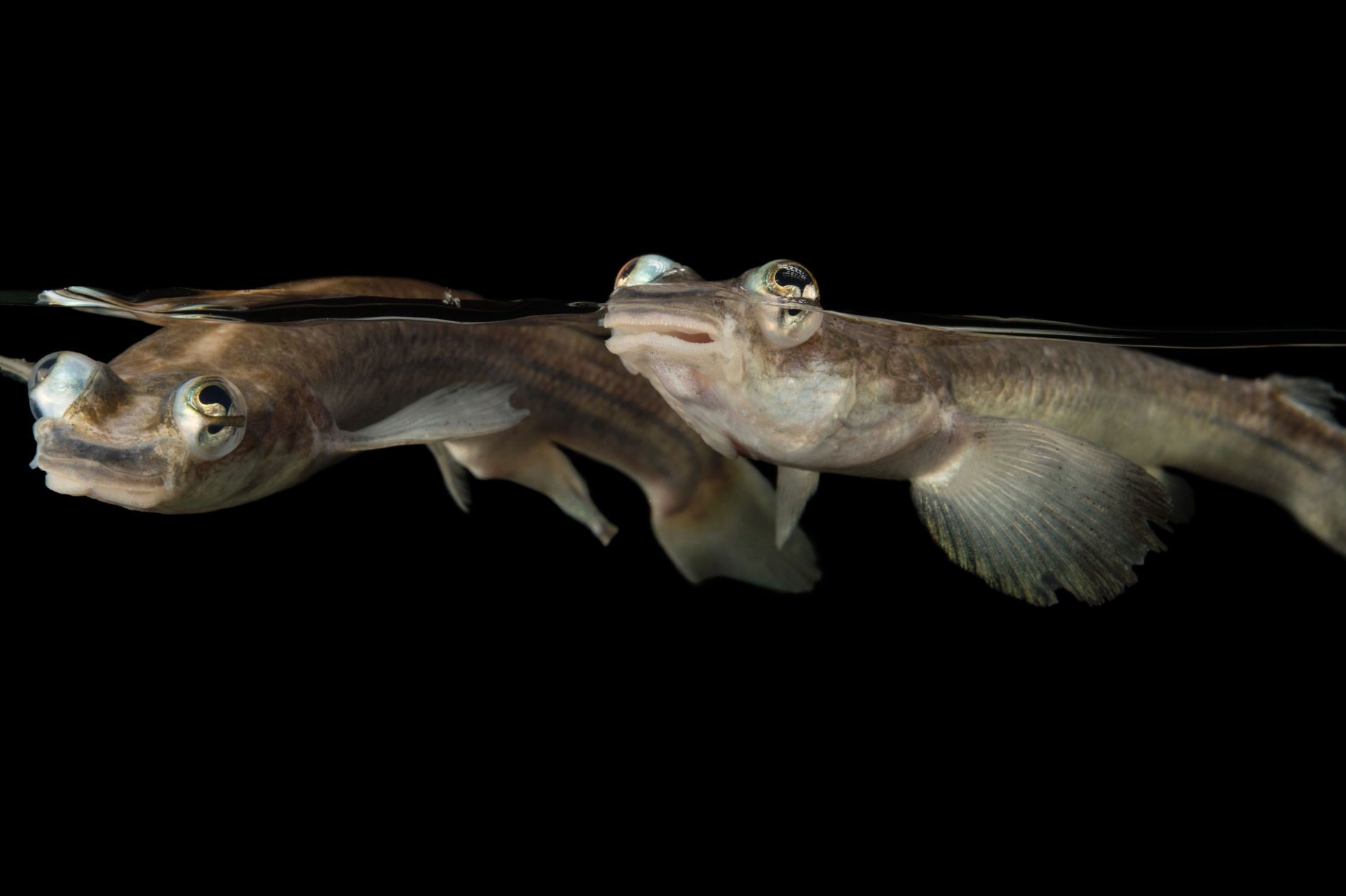
Sometimes tornadoes pick up fish while traveling over water and carry them over land, where the fish rain down. These "fish showers" have been happening for thousands of years. Roman writer Pliny the Younger describes this phenomenon in the 1st century A.D.
Empty dogfish egg cases sometimes wash up onto the beach. Some people call them mermaid purses.
Catfish have over 27,000 taste buds. Humans have around 7,000. The entire body of a catfish is covered with taste buds, as are many other fish species.
Humans have been amazed for centuries that salmon, after journeying across the ocean, can find the river where they were born. In the Yukon River in Alaska and in Canada, certain tagged Chinook salmon covered nearly 2,000 miles in 60 days. Salmon also have adapted to live in a variety of aquatic environments, including rivers, lakes, estuaries, coral reefs, and the open sea.
Hagfish are some of the slimiest animals on earth. An Atlantic hagfish can make enough slime in one minute to fill a bucket. Both images shown below are hagfish.
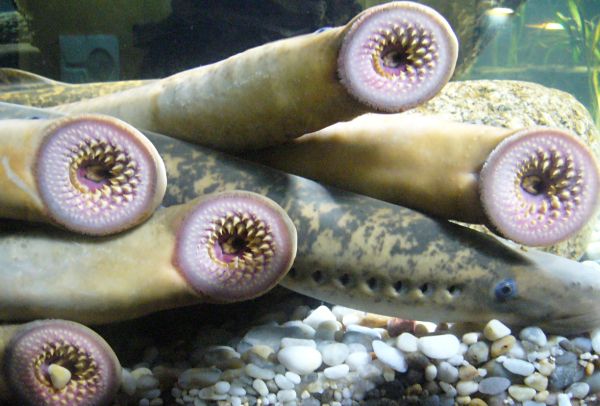
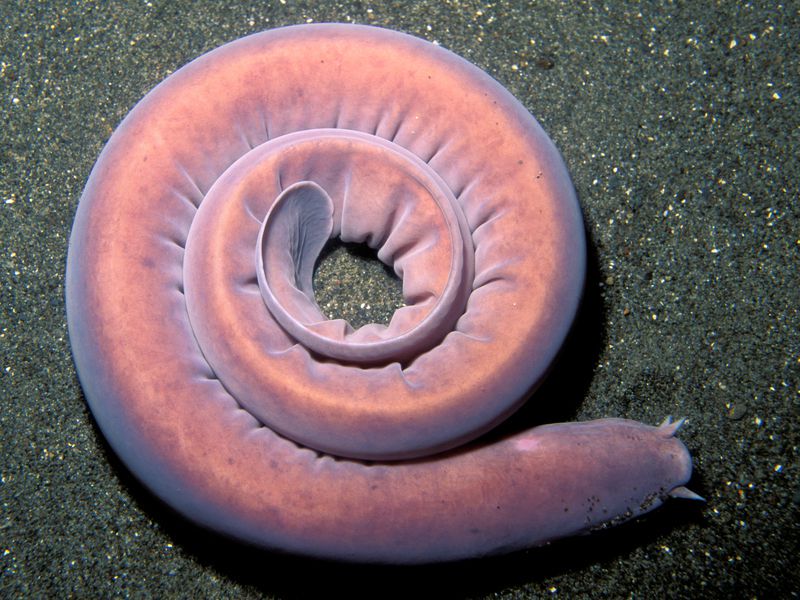
Unlike bony fish, sharks and rays do not have swim bladders. They have to swim all the time, even when they are sleeping. Otherwise, they will sink to the bottom of the ocean.
Unlike most other fish, the ocean sunfish does not have a tail. A female sunfish can lay 300 million eggs each year. Each egg is smaller than the period at the end of this sentence. I just considered typing out 300 million periods, but that'd be painstakingly annoying...anyway, here's an image of an ocean sunfish (Mola mola).
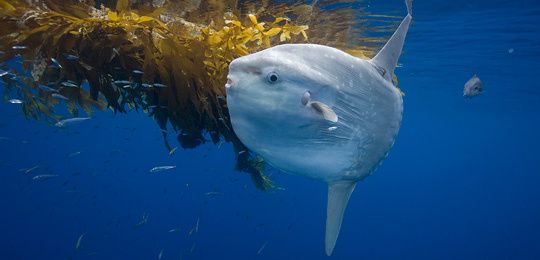
The freshwater Pygmy and Luzon gobies of the Philippines, the saltwater Marshal Islands goby, and the tiny rice fish from Thailand all reach a maximum length of 1.3 cm [1/2 in]. They are typically considered the world's smallest fishes.
Bạn đang đọc truyện trên: Truyen247.Pro